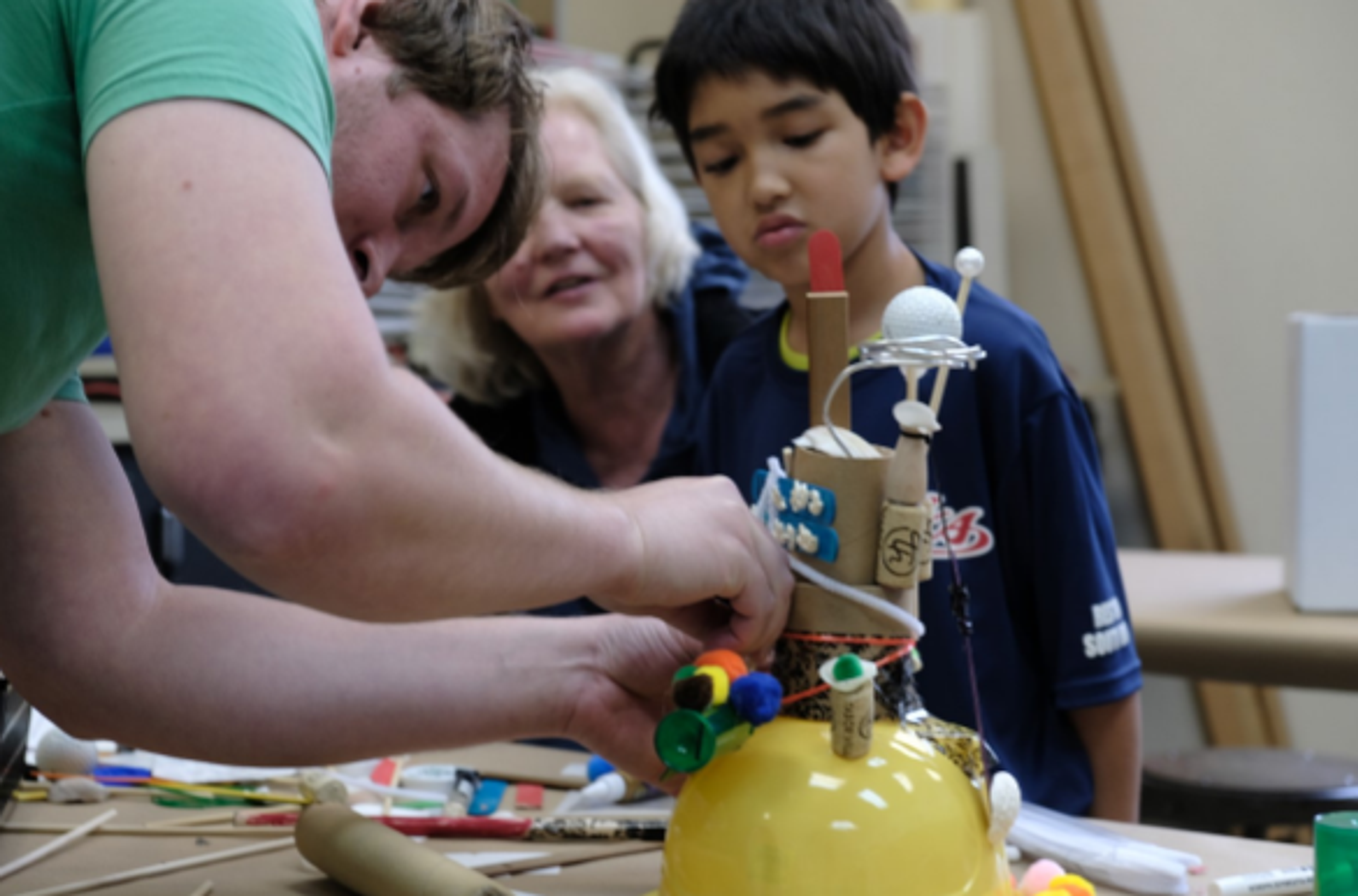
Students participated in a sculpture activity as part of the Rethinking Monuments exhibition. Photo Credit: Krasl Art Center.
Detroit Institute of Arts’ CohortPartner Story
As part of the Art Bridges Cohort Program, Detroit Institute of Arts assembled a traveling exhibition, "Rethinking Monuments." The exhibition also toured the Krasl Art Center, the Marshall M. Fredericks Sculpture Museum, and the Grand Rapids Art Museum.
Rethinking Monuments
“What stories do monuments help us remember? What histories do they ask us to forget?”
These were questions posed by Rethinking Monuments, a traveling exhibition created to serve the Detroit Institute of Arts’ Cohort, a multi-year, multi-institutional partnership facilitated by Art Bridges.
The exhibition featured nineteen sculptures and traveled from 2022 to 2023 to the Krasl Art Center, the Marshall M. Fredericks Sculpture Museum, and the Grand Rapids Art Museum.
Breaking Down Barriers
The Art Bridges Cohort Program is designed to foster this kind of community building, curating partner museum relationships and growing ties to the communities served by each museum. By breaking down communication barriers and establishing collection-sharing collaboration, the Cohort Program seeks to get art out of storage and back into communities.
In addition to collection-sharing and collaboration, regular convenings allow museums within a cohort to create new exhibitions, learning and engagement programming, and other curricula designed to drive museum attendance and conversation.
The Cohort Program is focused on regional success and community growth, as regional Cohorts develop relevant and timely exhibitions and programs speaking directly to their communities. It seeks to remove "red tape" and establish new processes that allow for the sustainable travel and exhibition of great works of art in museums typically deprived of the resources to host such work.
The multi-year nature of Cohort partnerships allows for sustained growth and conversation between museums and their communities. Years of engagement lead to a broader understanding of institutional goals, opportunities for professional development, and increased enthusiasm for creative program development.
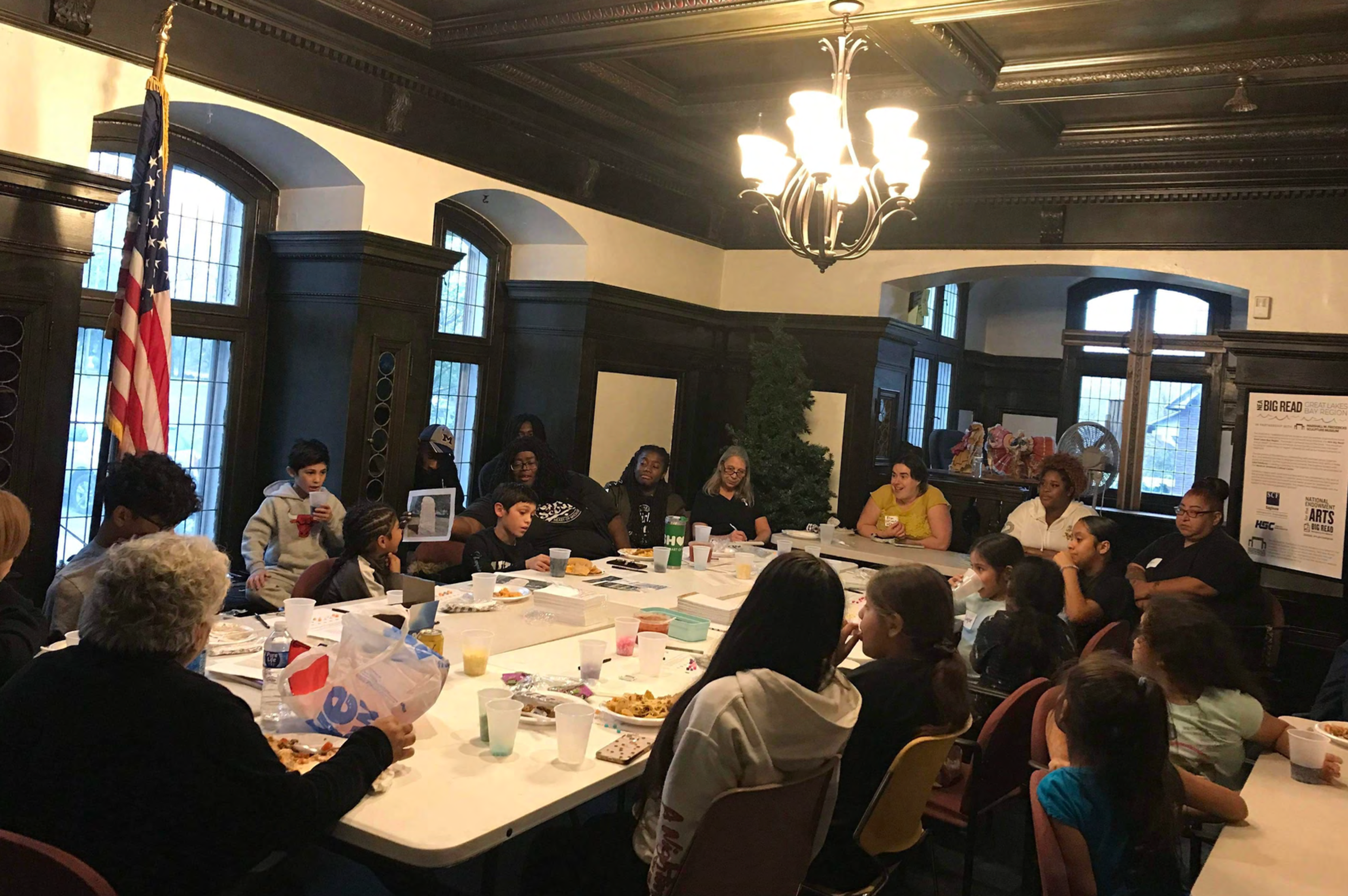
Community conversations were an integral part of the "Rethinking Monuments" exhibition. Photo Credit: Marshall M. Fredericks Sculpture Museum.
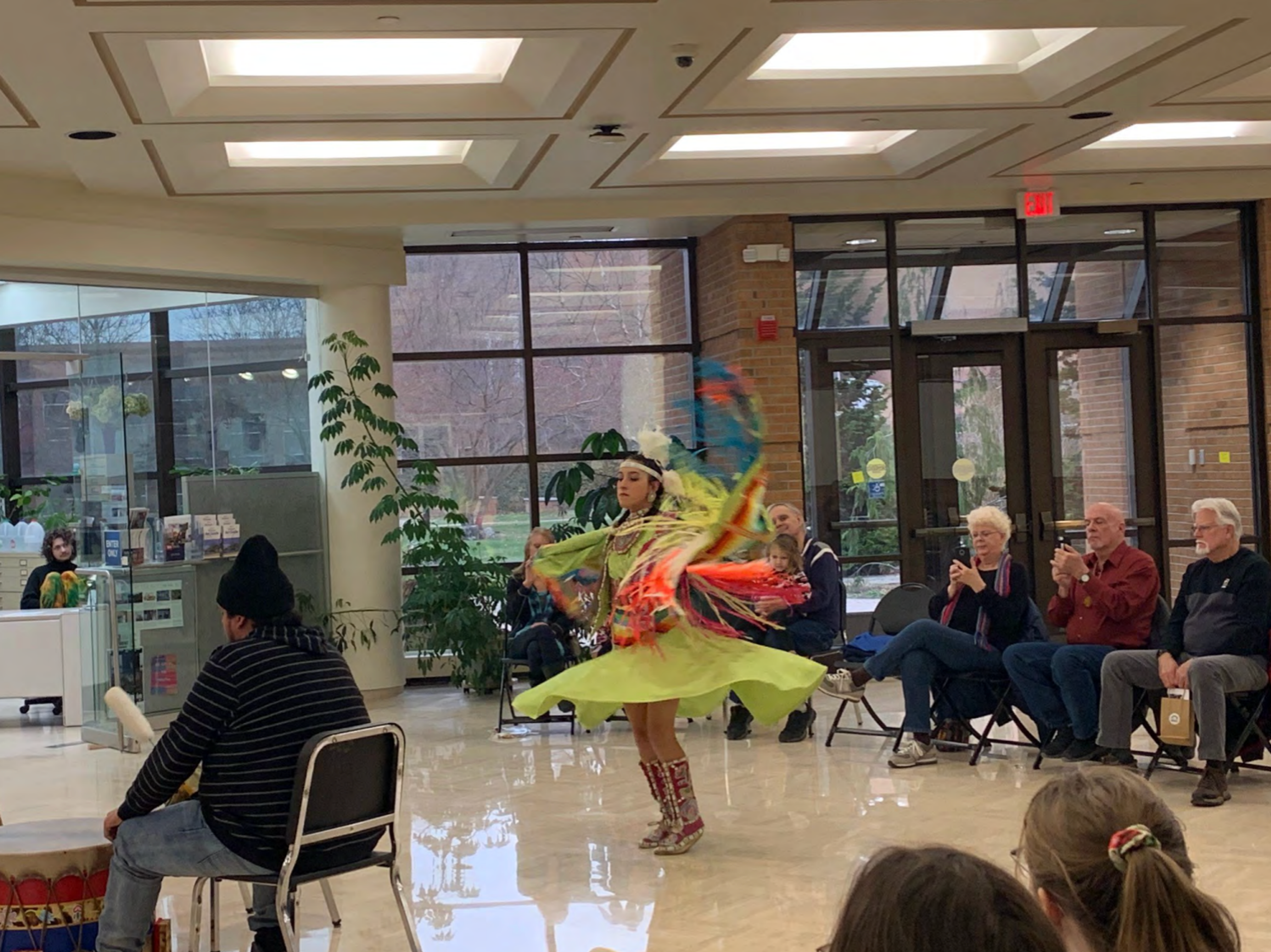
The exhibition, "Rethinking Monuments" led to community conversations and cultural education, culminating in a Native American Land Acknowledgment and new monument marker on Ojibway Island. Photo Credit: Marshall M. Fredericks Sculpture Museum.
Dialogue and Discussion
The sculptures found in Rethinking Monuments were made between 1850 and 2000. The collection was designed to prompt questions from viewers regarding the stories monuments tell and how those stories change over time. This was incredibly relevant community programming that saw meetings with local Indigenous tribes and the establishment of new dialogue regarding Indigenous-inclusive programming and art.
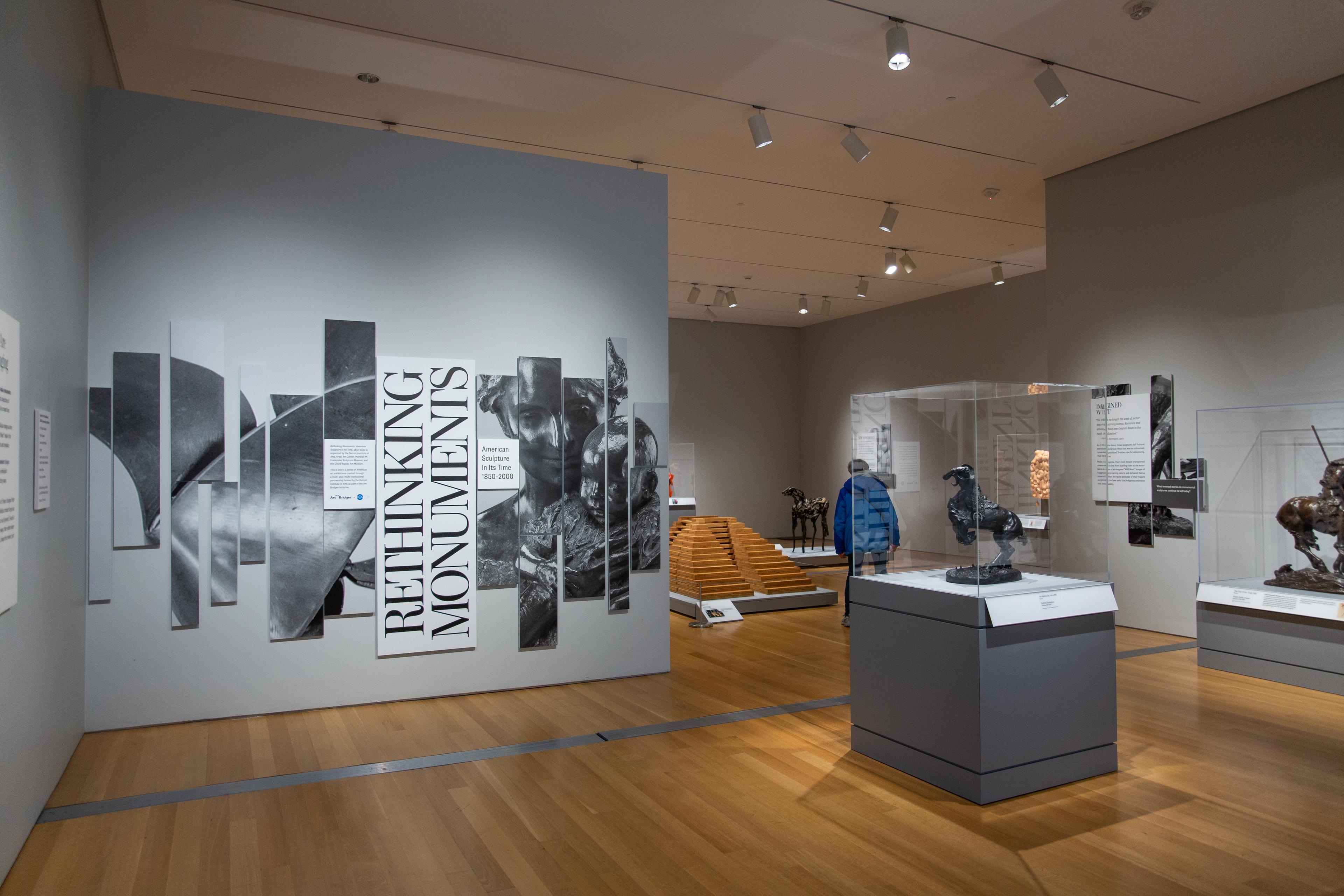
"Rethinking Monuments" featured nearly 20 sculptures ranging from 1850 to 2000. Photo Credit: Grand Rapids Art Museum
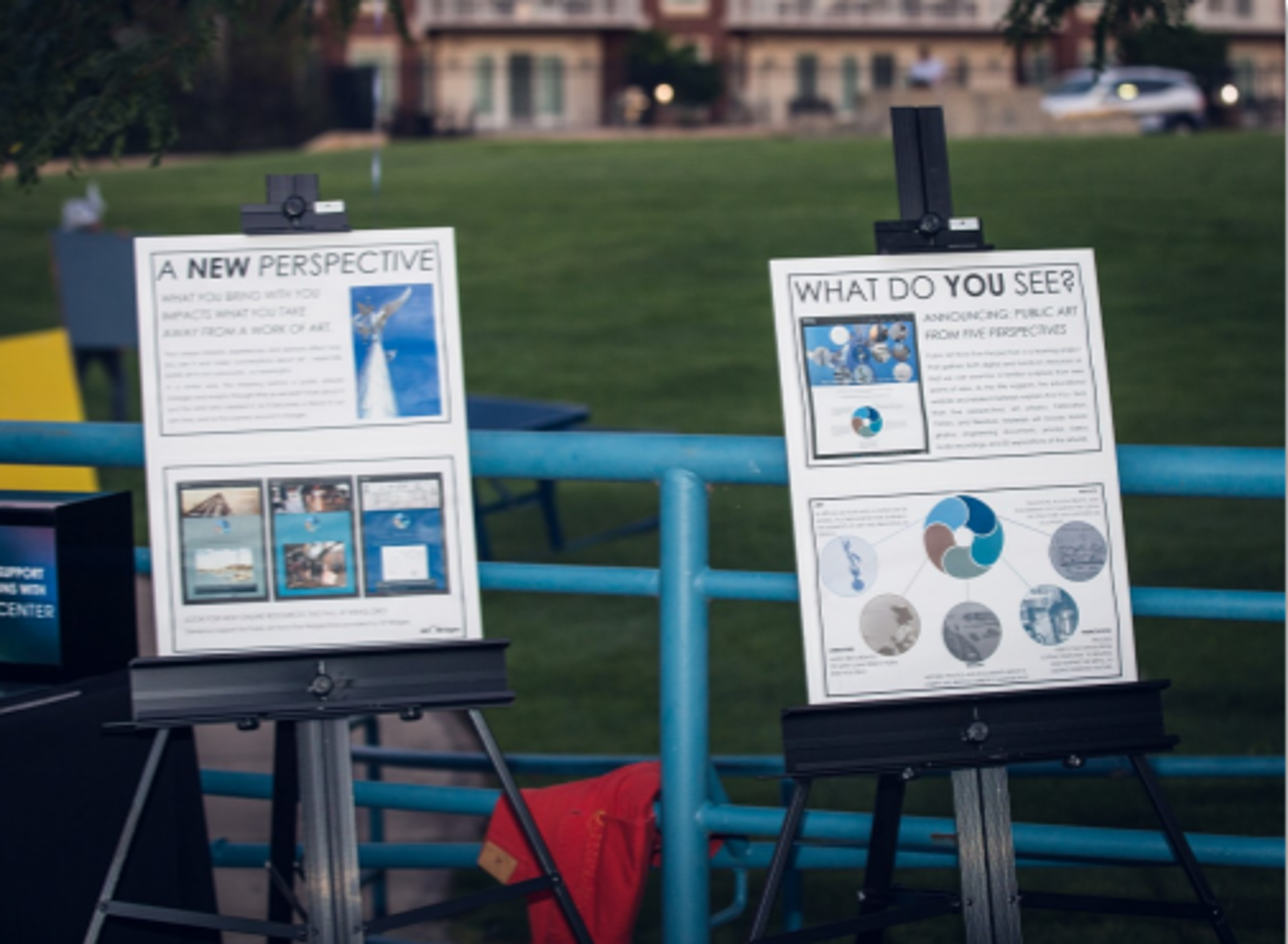
Displays at the Krasl Art Center encouraged visitors to see art from a new perspective, and to consider the many contexts in which sculptures are created. Photo Credit: Krasl Art Center
Why We Love This Project
We love that this project opens discussion for what is included in the canon of American art and that it creates dialogue between museums and communities who are historically underrepresented in these discussions. This project exemplifies the importance of cross-organizational collaboration and community engagement.
Latest News

Welcome Anne Kraybill, CEO
We are pleased to announce Anne Kraybill as Chief Executive Officer of Art Bridges!
Read More